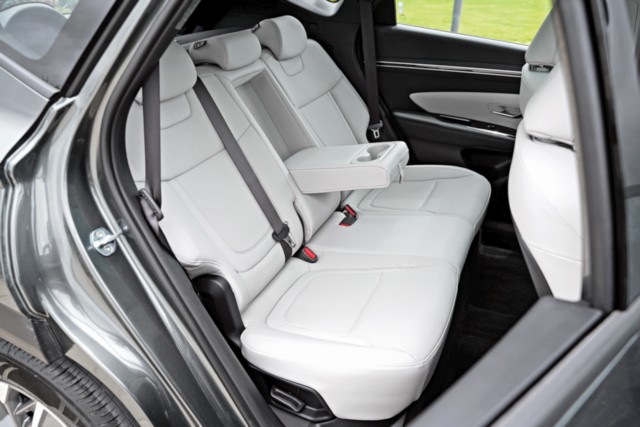
At the rear, there is space aplenty and support is excellent. The 60:40-split rear seat-back reclines and there are also controls on the right side of the front passenger seat to move it forward and liberate even more room for a limousine-like feel. Behind is a 540-litre boot which can hold up to 1,860 litres with the rear seat-backs folded down. The powered tail-gate gets three customizable height settings.
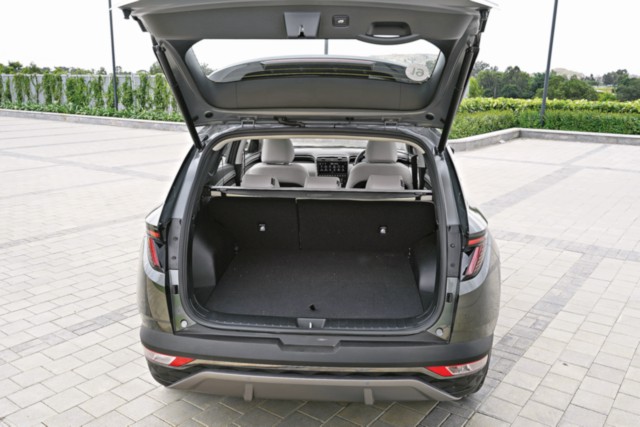
Under the bonnet there is the updated “Smartstream D” 2.0-litre, four-cylinder turbo-diesel which produces an even more potent 186 hp and a chunky 416 Nm of peak torque from 2,000 rpm. The engine is audible outside, but not so much inside. Being mated to an eight-speed automatic allows it to effortlessly cruise at highway speed at barely 1,500 rpm. The ratios are well-managed and the engine stays in its optimum zone for the most part, ready to respond at a few milliseconds’ notice. This car has the HTRAC all-wheel-drive system and that means it can claw in and pounce ahead when it needs to. The system, like most current AWD versions, is front-biased with the rear getting more torque when it needs to jump ahead or if any slip or correction is detected. It’s smart and feels that way. Speaking of which, there are new drive modes.
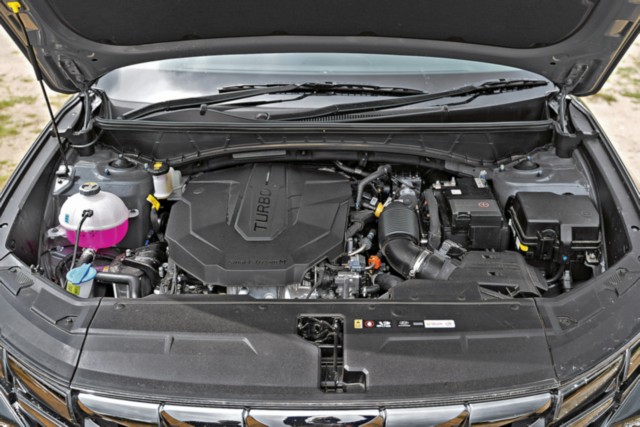
The selection of modes includes “Eco”, “Normal”, “Sport”, and a “Smart” mode, too; new to the family. It optimizes engine response, shift times, and overall driving characteristics. There are some common factors: the steering response, ride quality, and overall refinement are par excellence. Distances, both short and long, are no big deal. The comfort level is extremely high and the space and NVH matches, even exceeds, those offered by premium luxury brands like Volvo and Mercedes-Benz, let alone the direct competition—Volkswagen Tiguan, Škoda Kodiaq, Citroën C5 Aircross, and a few more now, too. This is made even more evident as one spends more time in it, as I found out driving from Bengaluru to the outskirts of Chickballapur and a very wet scene of natural beauty and winding country roads. It feels absolutely brilliant on the go.
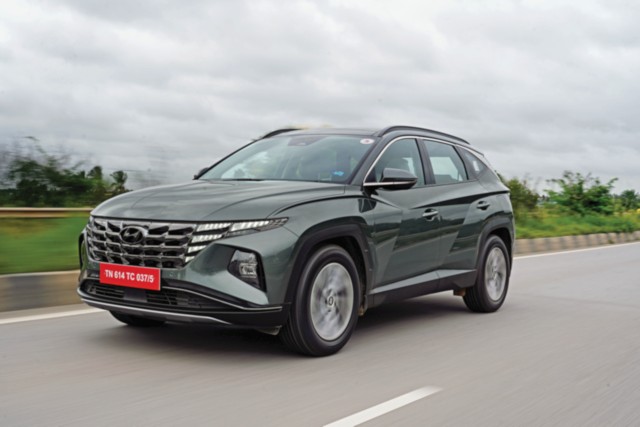
Another thing. A big one. ADAS! The advanced driver assistance systems offer Level 2 autonomous capability on the Hyundai Tucson—the equivalent of those on the Volvo XC40 and even XC60. These include adaptive or smart cruise control above 30 km/h with stop-go functionality, along with distance alert, collision mitigation with autonomous emergency braking—even for turn-ins at junctions, lane departure and keep via steering assist, a blind-spot monitor, rear cross traffic alert and more, all thanks to a set-up of cameras, radar and sensors. On the highway, these make life easy. Set the speed, set one of the four pre-set distances, and turn on the steering assist and it will drive itself and keep to its lane. And they all work flawlessly—at least in the daytime—even on roads with a clear road shoulder and mud on the side, but with no lane markings. Impressive!
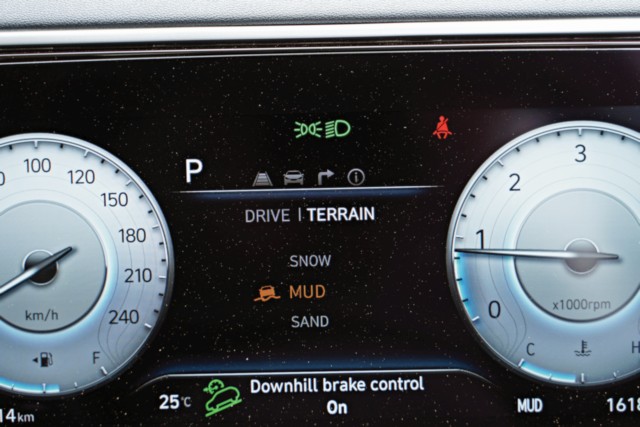
The Hyundai Tucson is also equipped with terrain modes for snow, mud, and sand, enhancing its rugged appeal further. Those, the ‘HTRAC” 4WD system, and the 192 mm of ground clearance make it easier to tackle bad roads or even no-road conditions. There was no aspect where the new Tucson did not shine. Okay, perhaps the turning circle is a bit wide but then again it is a 4.6-plus-metre car. And, finally, I must mention the achieved 21 km/l—Fine! An indicated 20.7—on the highway for the top-spec, four-wheel-drive, automatic, 1.8-tonne SUV. Not bad at all. The Tucson is a complete package. And with styling to drop jaws, it must have the competition shaking in their boots. Plus, there’s a diesel and a petrol.
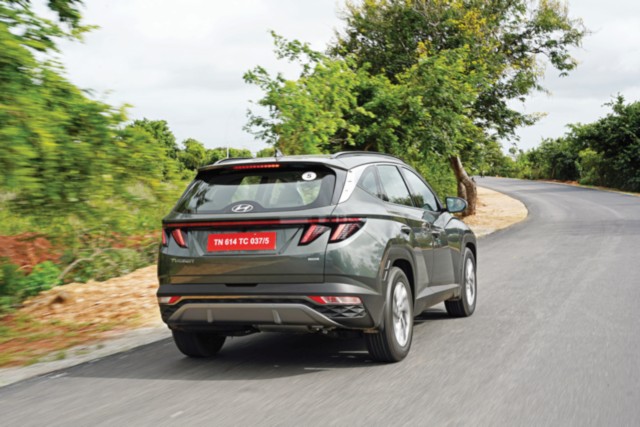
Need to Know – Hyundai Tucson 2.0D 4WD AT Signature
Price: Rs 34.39 lakh (ex-showroom)
Engine: 1,998 cc, in-line four, turbo-diesel
Max Power: 186 hp @ 4,000 rpm
Max Torque: 416 Nm @ 2,000-2,750 rpm
Transmission: Eight-speed automatic, all-wheel drive
Suspension: MacPherson strut front, multi-link rear
Weight: 1,810 kg




















Leave a Reply